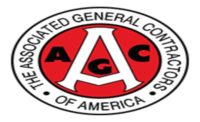Construction spending rose modestly in January from year-earlier levels despite retreating from a six-year high in December 2014, according to an analysis by the Associated General Contractors of America. Association officials cautioned, however, that those spending gains could be at risk if Congress and the Obama administration fail to address highway funding shortfalls that once again threaten a new road repair season.
"Construction continues to expand overall but with a lot of variability by month and segment," said Ken Simonson, the association's chief economist. "The generally positive trends are obscured by an unreliable estimate for residential improvements which purportedly shows a huge downturn that is inconsistent with other data."
Construction spending in January totaled $971 billion at a seasonally adjusted annual rate, 1.1% lower than in December but 1.8% higher than in January 2014, Simonson noted. The divergent totals were reflected as well in major segments. Private residential spending in January climbed 0.6% from December but slipped 3.4% from a year earlier, while private nonresidential spending slid 1.6% for the month but rose 4.8% year-over-year. Public construction spending decreased 2.6% from December and increased 5.1% from January 2014.
"The picture would look much better if not for an estimated 30% plunge in residential improvements over the past year," Simonson added. "Unfortunately, the government has had to derive this estimate from very indirect sources since funding was cut several years ago for a survey of residential additions and replacements. The supposed decline is not credible at a time when new and existing home sales are rising, as are sales by home-improvement chains."
Several major private construction segments recorded double-digit spending growth from January 2014 to January 2015, including multifamily construction (mainly apartments), 30%; manufacturing construction, 23%; lodging, 18%; office, 15%; and commercial (retail, warehouse, and farm), 14%. The two biggest public segments also increased: highways and streets, 8.4%; and education, 0.6%.
Association officials said the increase in highway spending was in jeopardy of reversing unless Congress and the administration can quickly agree on a long-term funding bill to replace the law that will expire on May 31.
"If Congress and the White House can't figure out a way to finance needed investments in infrastructure, our winter-ravaged roads and bridges will only deteriorate further," said Stephen E. Sandherr, the association's chief executive officer.





